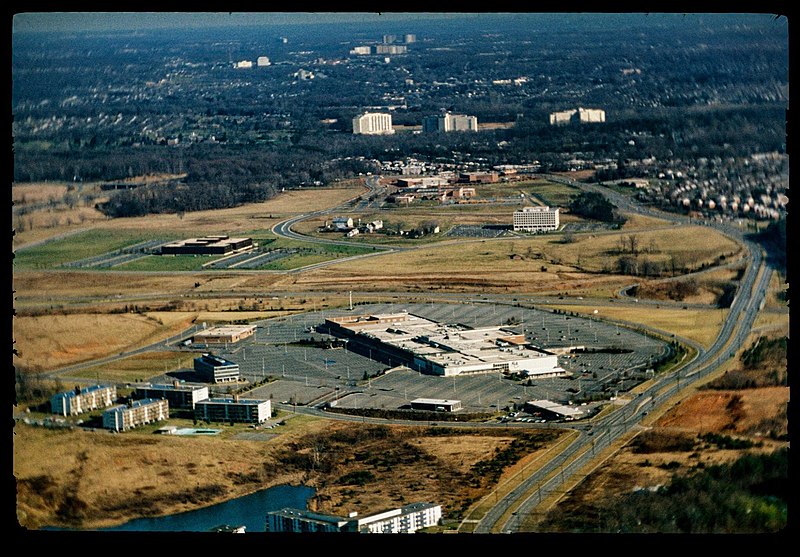The below Dec. 14, 2020 press release is from Montgomery County (Maryland) Government.
Montgomery County Executive Marc Elrich has released the Draft Climate Action Plan for public review. The Climate Action Plan is the County’s strategic plan to cut greenhouse gas (GHG) emissions by 80 percent by 2027 and by 100 percent by 2035. [Note: County Executive Elrich held a discussion of the draft Climate Action Plan with members of the community in a virtual meeting on Dec. 15th].
The actions and technical analyses presented in the plan build upon the work of more than 200 volunteer members of the Climate Technical Workgroups, community groups, County employees and technical consultants—as well as input from the public. The 87 climate actions outlined in the plan lay the path to meet the County’s ambitious climate goals while building a healthy, equitable and resilient community.
The Draft Climate Action Plan is open for public review and comment through the end of February. The plan will be finalized in the spring of 2021. [To view a complete list of the recommended actions, visit: https://montgomerycountymd.gov/climate].
The Climate Action Plan was spurred by the County Council’s Emergency Climate Mobilization Resolution that accelerated the County’s communitywide GHG emission reduction goals that were established in 2008. The resolution recognized the existential threat that climate change poses to society and natural ecosystems and called for the County to take a leadership role in modeling strategies to safeguard the planet.
The Draft Climate Action Plan details the effects of a changing climate and includes strategies to reduce GHG emissions and climate-related risks to the County’s residents, businesses and the built and natural environment.
“We are already feeling the impacts of climate change in our County—hotter summers, increased flooding events and more extreme storms,” said County Executive Elrich. “The strategies outlined in this plan address these impacts, prioritize those in our community who are most vulnerable to the impacts of climate change and identify opportunities to enhance racial equity and improve our quality of life, all while reducing emissions. I want to thank all members of our community who worked so hard and who carved out so many hours to establish the foundation for this important plan. The hundreds of ideas generated by our residents, businesses and other local organizations are reflected throughout this plan.”
The Draft Climate Action Plan identifies the County’s major GHG emissions sectors, including energy supply, buildings and transportation, and proposes actions to directly reduce GHG emissions in these sectors. The plan also includes actions related to climate adaptation, carbon sequestration, climate governance and public engagement, partnerships and education.
Recommended actions in the plan include:
Buildings
- Implement code requirements and develop incentives for public and private buildings related to solar photovoltaic (PV) installations, electrification, net-zero standards, green and cool roofs and extreme weather.
- Implement building energy performance standards for existing commercial, multi-family and residential buildings.
- Prohibit natural gas in new construction.
Clean Energy
- Advocate for and develop an Opt-out Community Choice Energy program in which the County would purchase renewable energy on behalf of electricity customers.
Transportation
- Expand public transit service, pedestrian and bicycle infrastructure and a shared micro-mobility network.
- Limit cars in urban areas and implement congestion pricing.
- Advocate for a local vehicle carbon gas tax.
- Support community-wide resident adoption of electric vehicles; electrify public buses, school buses and the public vehicle fleet; and expand the electric vehicle charging infrastructure network.
- Support telework and other transportation demand management strategies.
Carbon Sequestration
- Retain and restore forests, meadows and wetlands and increase tree canopy.
- Expand regenerative agriculture practices and community gardens.
Adaptation
- Repair and upgrade stormwater drainage and management systems.
- Enhance temperature and stormwater monitoring and alerts.
- Update green streetscape and green infrastructure standards.
- Harden emergency shelters and install resilience hubs (public facilities such as community centers that can island from the grid and provide continuous power during outages).
- Update floodplain maps.
Governance
- Establish a climate academy for County government staff; identify and train departmental “Climate Ambassadors.”
- Evaluate and update County government planning, policy and operations activities to reduce GHGs and account for the risks of climate change impacts while prioritizing the needs of vulnerable residents.
- Integrate climate considerations into the budgeting process.
- Create a workgroup to develop financing strategies for implementing climate actions.
Public Engagement, Partnerships, and Education
- Conduct a public outreach campaign to empower the public with information on how to reduce emissions and adapt to climate change impacts.
- Form a climate change communication coalition to coordinate outreach.
- Form a racial equity and climate change task force to help guide plan implementation.
- Establish a statewide coalition of local governments focused on advancing ambitious state climate policies, such as a 100 percent Renewable Portfolio Standard.
- Engage County artists through public art installations to raise awareness and spark discussion and action on climate change.
- Develop a standardized climate change curriculum and provide professional development for educators on climate change.
[There is more about the climate action plan here].

Image above: Bethesda/Chevy Chase Facebook Page
Published by Alan Kandel